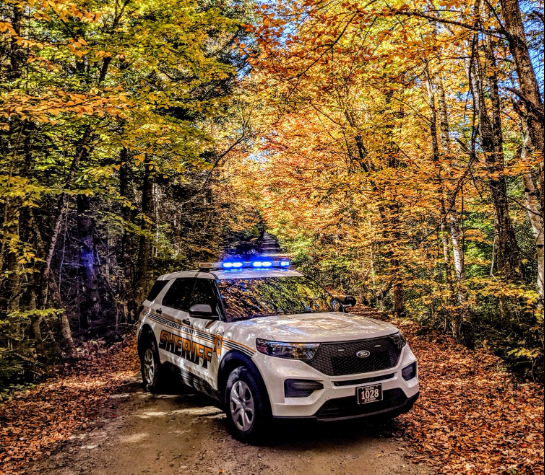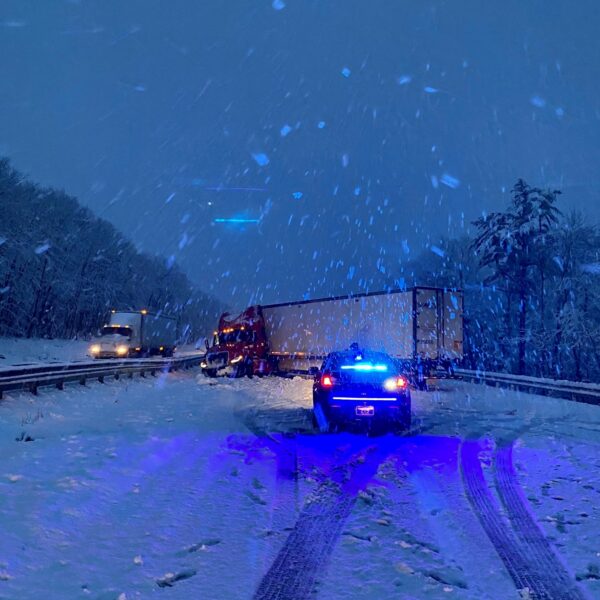
Late at night on June 10, 2022, a public information officer (PIO) with the Maine State Police published a press release announcing forthcoming major changes in the law enforcement agency’s infrastructure stemming from “changing demands of the public safety environment.”
Department of Public Safety PIO Shannon Moss outlined plans to implement midnight-shift patrols, increase Specialty Teams and Major Crimes Unit, bolster the roster of police academy faculty, deploy five Behavioral Health Specialists to address mental health crises in the community, and employ body-worn cameras among its sworn staff.
Per Ms. Moss, Maine State Police Colonel John Cote “is excited to announce a State Police structural reorganization which will incorporate several new positions and other efficiency measures including leveraging existing personnel to provide better service to the citizens of Maine.”
Directly from Colonel Cote: “The most important message is that the Maine State Police core mission will remain the same. In the field, we will work to implement our new resources while existing Troopers continue to serve and protect our communities. We will also continue to honor all existing call-sharing commitments with our county partners.”
That last part refers to different law enforcement agencies collaborating in the field, taking calls together, and providing back-up to whoever gets on-scene first. This collective effort is especially imperative when the landscape is of the rural kind and backup officers are not necessarily right around the corner, like in metropolis jurisdictions. (In case you missed it, the NPA recently published a piece analyzing the inherently perilous nature of law enforcement working in remote regions.)

(Photo courtesy of the Penobscot County, Maine sheriff’s office.)
From what I read, the Maine State Police, the Maine Sheriffs’ Association, and the Maine Chiefs of Police Association met to chat about the DPS changes and ended the meeting with handshakes sealing collaborative efforts. After all, agencies lacking state jurisdiction (such as county sheriff offices and municipal police departments) stand to gain from the state’s funding efforts and deployments of additional/restructured resources, such as borrowing specialized unit personnel and equipment for more localized situations.
With that, we segue to another vital component of the state police restructuring…
Implementing a midnight shift may cause an eyebrow raise. It did for me until I dug for further information.
As it currently stands within the Maine State Police structure, troopers are assigned responsibilities to respond to calls for service during midnight hours, and do so from their homes, otherwise known as an on-call or call-out basis. While this method certainly saves agency resources such as fuel consumption and wear and tear on police cruisers, it seemingly forfeits the value of visual deterrents and prompt response times inherent in public safety and expected by the general public.
Additionally, as it relates to the changes in midnight-shift responses, “Under the current structure, Troopers maintain a readiness and on-call status through the night which often results in unexpected call-outs and impact to their well-being,” as per PIO Moss.
What she is referring to is the get-up-and-go rituals ordinarily encountered by our public safety cohorts in the fire services: living at the firehouse and, when a call for service comes in, moving expediently from a deep slumber and nevertheless providing optimal public safety services without fail—wear and tear on human physiology catches up, despite well-intended premises.
With that, Ms. Moss said this: “We believe that the creation of an overnight shift will provide an expedited response to critical calls from the public during the overnight. This will also provide vital support for the health and wellness of our troopers. This change is simply the first evolution that will allow the agency to be much more agile in making ongoing adjustments based on the changing demands of the public safety environment.”
Considering Maine’s inclement weather and rural areas and the time it takes to mobilize from home, being already out there has definite benefits.

(Photo courtesy of the Maine State Police.)
With the current state of inflation and whopping gas prices at the pumps, funding allocations provided by state government catalyzed by public safety reforms are nonetheless necessitated for successfully providing public safety. Taxpayers receive what they pay for.
On that note, a small police agency in Kittitas, WA (population 1,342) recently decided to go the way of traditional fire departments, including housing its cops in a vacant city hall building formerly used by the volunteer fire department. Per the Daily Record, Kittitas Police Department Chief Aaron Nelson said “the concept was one of the first things he looked at after taking the helm, saying he knew that something new needed to be done to provide 24-hour coverage to the city’s residents.”
Per Chief Nelson, “There was no way to cover [the city and police responsibilities] without doing something innovative. We didn’t have the manpower and the budget to give the city the service it needs without demanding a huge increase. Realistically, we should have six cops plus a chief to provide 24/7 coverage traditionally.”
Kittitas Police Lieutenant Alan Parker offered, “Because we can sleep on shift and I’m not coming off a [graveyard shift] coming home, the downtime is less.”
To each their own based on budget and philosophy and what works best toward their effort to provide public safety.
Ultimately, as it relates to road-ready state troopers, criminal matters and significant literal roadblocks can’t necessarily wait, as secondary dangers evolve from primary ones:

(Photo courtesy of the Mane State Police.)
The Maine State Police reorganization blueprint stems from millions of dollars authorized by Governor Janet Trafton Mills, a factor the polar opposite of the Kittitas police budget relying on a modest tax base.
There was a time during my police career when gas prices soared and stayed that way for quite some time, impacting the police department’s already-skeletal budget. No surprise there. The City Council and police command staff issued a directive curbing (literally) cops on all shifts. The order was to drive less and park more to preserve fuel, meaning the cruiser turned off (fine during Florida’s super-brief periods of reduced temps; not so dandy throughout most of the year when the sun challenges anyone wearing a ballistic vest without A/C).
Overall, the squads complied as much as possible. But, unsurprisingly, criminals didn’t cooperate and crime rates bloated. (Shortly after the gut-punch of abysmal crime data, we went back to full mobility. No surprise there either.)
Speaking of cooperation, Maine’s government addressed the burgeoning mental health crisis by hiring behavioral health specialists to partner with state police personnel.
Although some reforms may seem prudent, the aspect of deploying civilian behavioral health specialists along with cops is still a risky use of resources. Well-intentioned, but dangerous to all parties on the scene involving a potentially (or definitively) volatile individual (or several) fueled by mental health breakdown.
Per Colonel Cote, “The Behavioral Health Specialists will serve as liaisons to the Troopers in the field and help people in need of services. These specialists will coordinate with resource providers and law enforcement to better deliver services and connect those struggling with mental-health crisis, substance use disorder, elder abuse, homelessness, and domestic/family violence.”
Anyone could size this arrangement up and see the complexities. Although some instances may wind up without any incident, it takes one mentally disarrayed person to combust, no matter who is on-scene delivering behavior-centric assistance. Ultimately, all extra bodies on-scene become additional responsibilities for the LEO. The Philadelphia Police Department and other law enforcement agencies dubbed their implementation of behavior health specialists “co-responders.”
Various police entities have deferred to calls for pairing mental health professionals with law enforcement officers, many riding along in fully marked patrol cruisers and subject to the same onslaught of perils confronted by sworn cops daily.
The Denver Police Department cites relative success in its behavioral health co-responders, but, in late 2019, encountered funding shortfalls to maintain its collaboration with mental health professionals.
Politicos putting money where their mouth is?
Ultimately, the Maine State Police administration addressed calls for reforms, composed the reorganization package, and solicited budgetary support from the governor’s office to make it all work.
Per the PIO, our “reorganization is largely resulting from requests by the Maine State Police to the Governor through her supplemental budget package. Among the personnel added to the Maine State Police organizational body were the inclusion of 3 Detectives, bolstering their special teams such as SWAT, an additional Trooper for the Training Unit assigned to the Maine Criminal Justice Academy, and funding for a body camera program.”
Yes, body-worn cameras, the footage of which we have seen as irrefutable evidence putting egg-on-face on those falsely accusing law enforcement officers of wrongdoing —whether to spite or for a whack at a would-be settlement (tax dollars)— come with more than one purpose. Recording what is working and what is not working in terms of reforms among “changing demands of the public safety environment” helps abate the knee-jerk nonsense and scapegoating of America’s cops, a reform cops deserve.